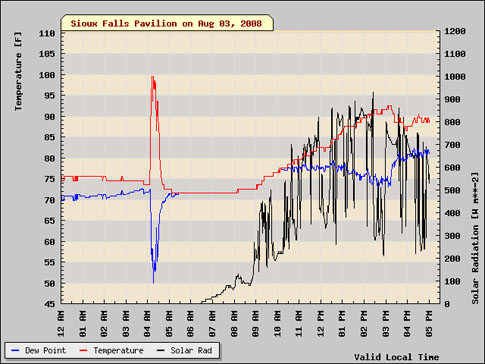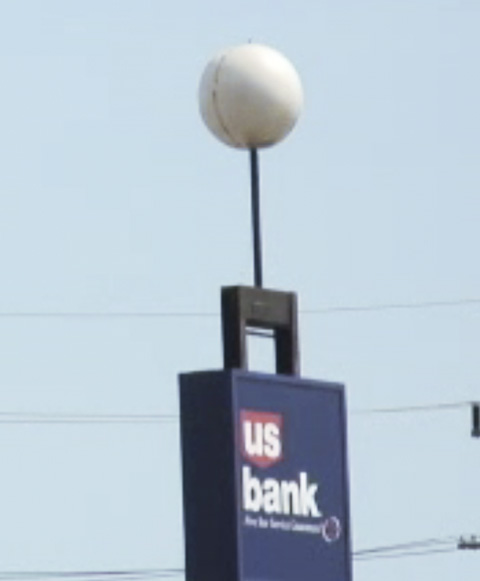Last night we experienced a rather weird and rare weather phenomenon. It’s called a Convective Heat Burst.
About 4 a.m. this morning I woke to the sound of shrieking winds and tree branches falling on the roof. I looked outside & saw that a good-sized branch had fallen from the maple tree, so I went outside to check & see if there was any damage. One step outside the back door and I knew something was up; it was like walking into a sauna — hot!
The wind was still howling and it was beginning to rain, but thankfully, there wasn’t any damage to the house & the large branch had fallen between our house and the neighbor’s garage on the fence & but small branches were scattered everywhere. The wind died down shortly afterward, and I could feel the temperature dropping while I was out there. It was strange; really strange.
This afternoon I went digging around on the Internet to see what I could find out about what went on this morning; KELO-TV had a blurb on their website and their blog about it which provided me with its name, and of course Wikipedia has a page on it, which was even updated with this morning’s event; how about that! I posted a question to the KELO blog about it and Tony Barlow responded with a little more information on it and a link to another website describing the phenomena. The graph below (click on the image for a slightly larger version) also came from Tony and the KELO blog.

Turns out that meteorologists don’t know for sure what causes a heat burst but they always happen when a thunderstorm cell is dying. It’s theorized that it starts when rain hits a pocket of dry air at about 10-20,000 feet and quickly evaporates. The evaporating moisture causes the air to become more dense than the surrounding air, which causes it to descend rapidly. During the rapid descent the air mass is compressed, which causes its temperature to rise sharply. When that mass of air hits the ground, you get high winds and hot, dry air. The link provided by Tony mentions that the hot dry air is capable of killing vegetation by quickly pulling the moisture out of it, and in some cases the heat can stick around for quite some time.
According to the chart above the temperature was about 73° prior to the event. Within a very short time period the temp jumped to the 101° high, then drifted back down to about 72°. According to the Wikipedia entry, a heat burst occurred in Brazil in 1949 causing the temp to jump from 100°F to 158°F in two minutes!
I had never even heard of a heat burst before, much less experienced one, so in a way I’m glad for the large downed branch laying in my yard, in spite of the extra work it means… If it weren’t for that I wouldn’t have been outside at 4a.m. to experience the heat; and if it weren’t for that I wouldn’t have been curious enough to go looking for the reason behind that and the wind accompanying it.
Update: Read the rest of this entry »





